Chemistry and Chemists № 2 2024
Journal of Chemists-Enthusiasts
| Content | Chemistry experiments - video | Physics experiments - video | Home Page - Chemistry and Chemists |
|
Chemistry and Chemists № 2 2024 Journal of Chemists-Enthusiasts |
Plants as acid-base indicators - part 3, 4 Volodymyr M. Viter |
|
Having noticed a mistake in the text, allocate it and press Ctrl-Enter
The tulip occupies one of the first places in the list of plants on which I have planned experiments. Now the tulips are blooming. Unlike many surrounding plants, tulips grow and develop over a very short time: in the spring they grow from the bulb, bloom and fade. The growing season of tulips takes several weeks, while most of our plants continue to grow throughout the warm season, which is approximately 7-9 months. Recently, our winters have been mild, so some plants stay green all winter (not just conifers). Tulips "cannot afford" such luxury, since the tulip's homeland is the foothills of the Tien Shan, where plants have very little time to complete the growing season.
I read that tulips in Ukraine are not only cultivated but also wild plants, however, I have met them exclusively in flower beds. In other words, there are two ways to get a tulip for experimentation: to buy a bouquet or 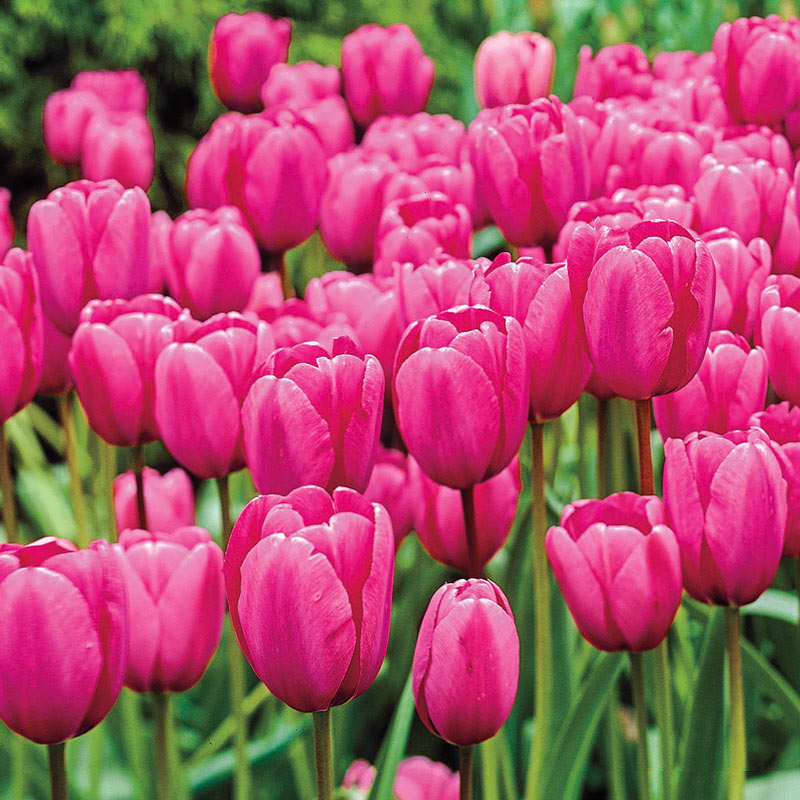 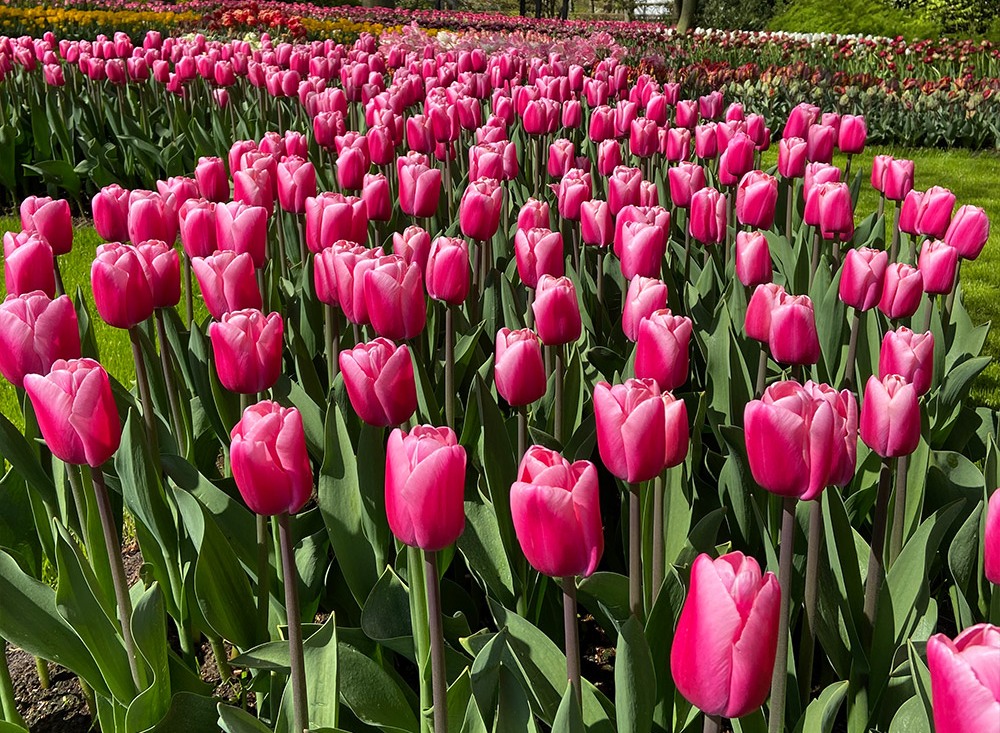 Another question is the choice of colour. Many varieties of tulips are known they produce flowers of all colours of the rainbow: red, pink, yellow, purple, etc. I decided to start with pink tulips. The effect of acid on pink plant pigments looks unpromising, and yellow pigments behave similarly. Most likely, the colour of the plant pigment would not change in an acidic solution. Therefore, I decided to use ammonia to treat tulip flowers. I placed a pink tulip flower in a glass and added a concentrated ammonia solution. Gradually, the flower turned light brown. The process of colour change occurred unevenly - various parts of the flower acquired a brown colour at different times, which is explained by different rates of ammonia diffusion into plant tissues. I took the brown tulip from the glass, rinsed it with water, and placed it in another glass. Then, I added glacial acetic acid. The tulip turned pink. After treatment with acetic acid, the tulip flower was similar to the original flower (before the action of ammonia). |
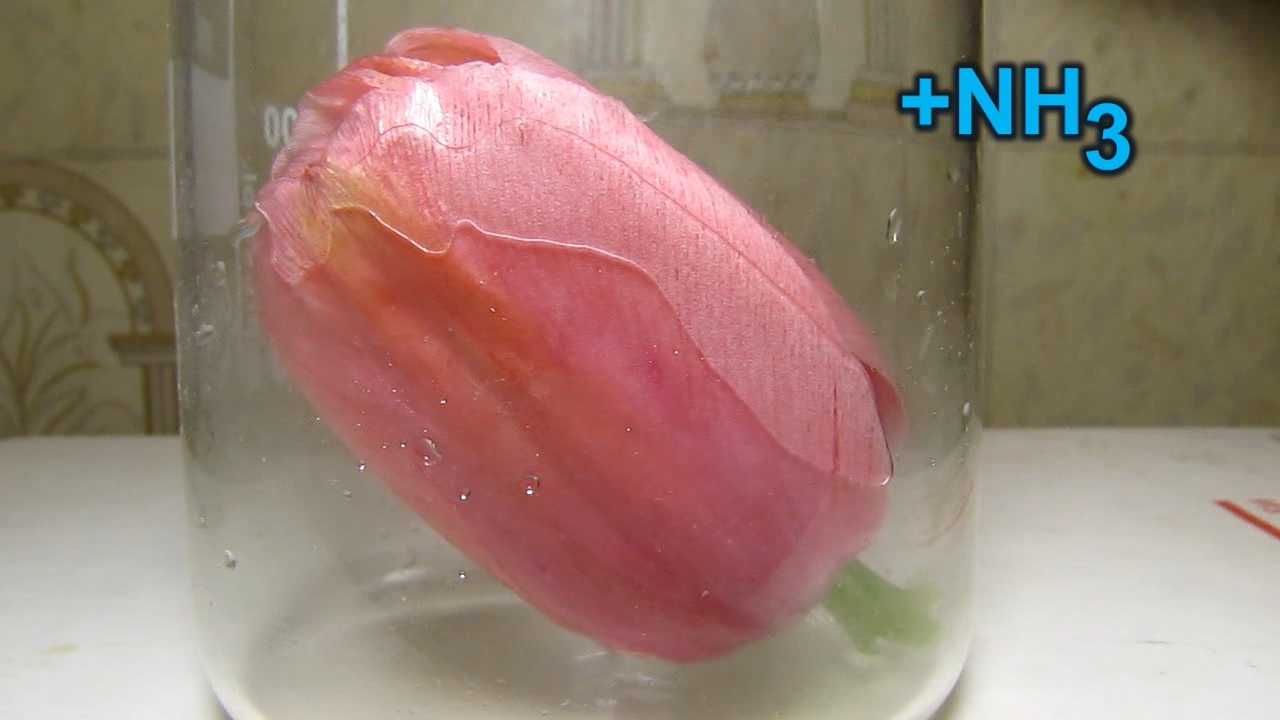
Pink tulip, ammonia and acetic acid |

|
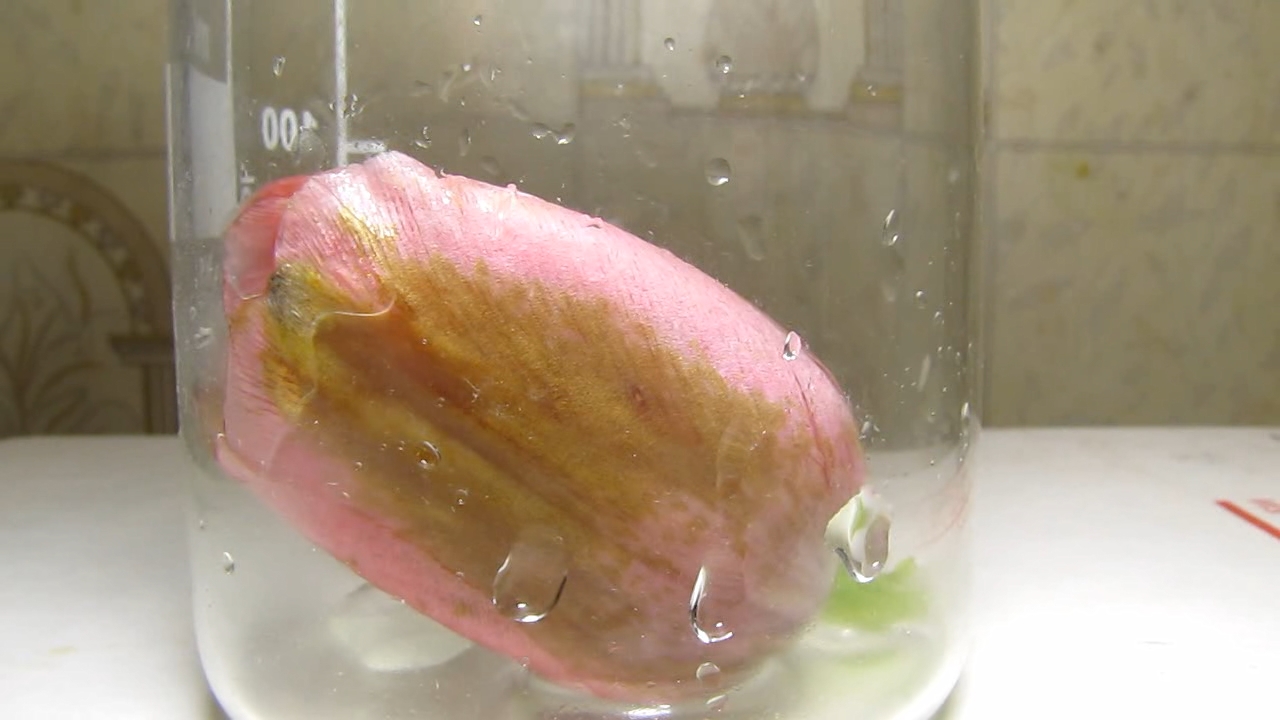
|
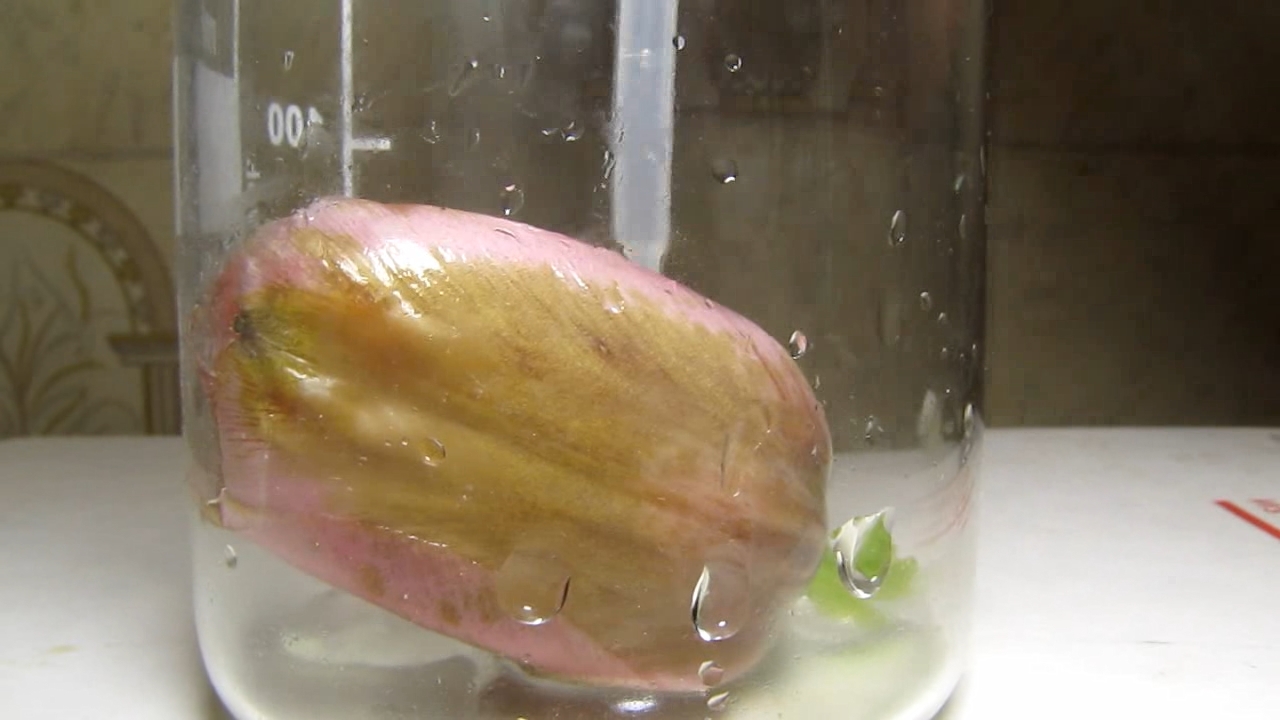
|
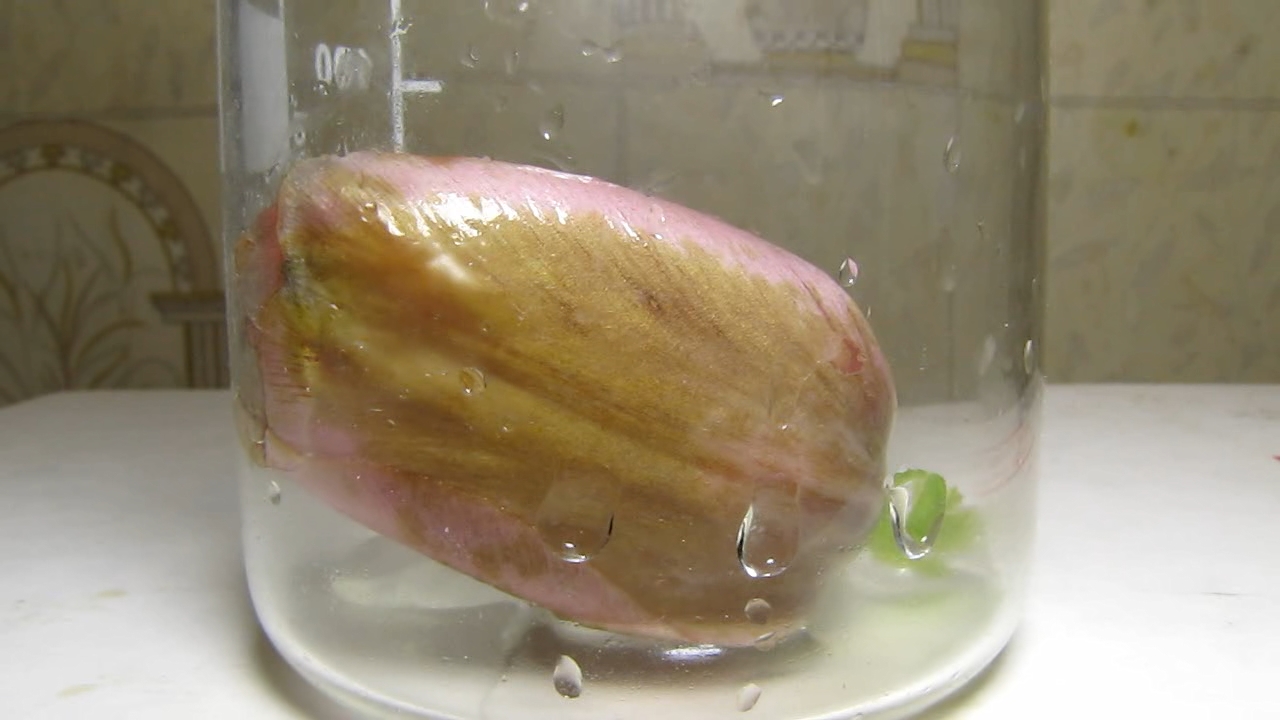
|
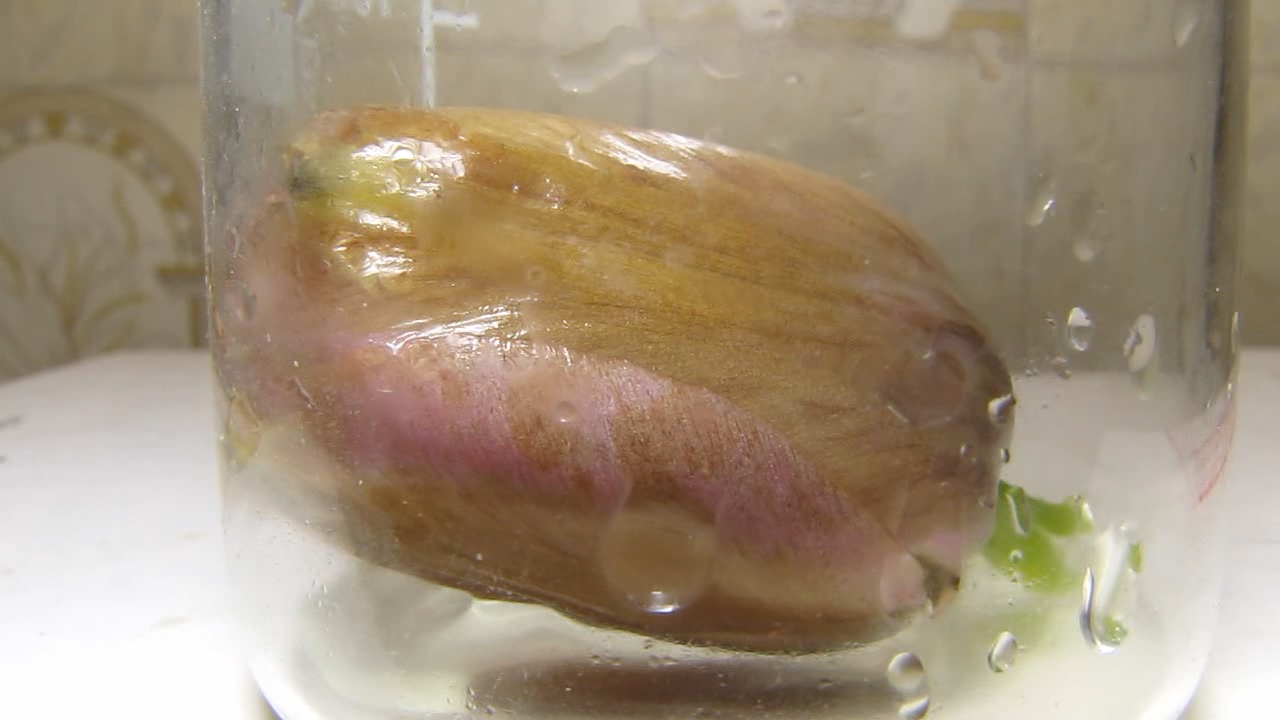
|

|

|
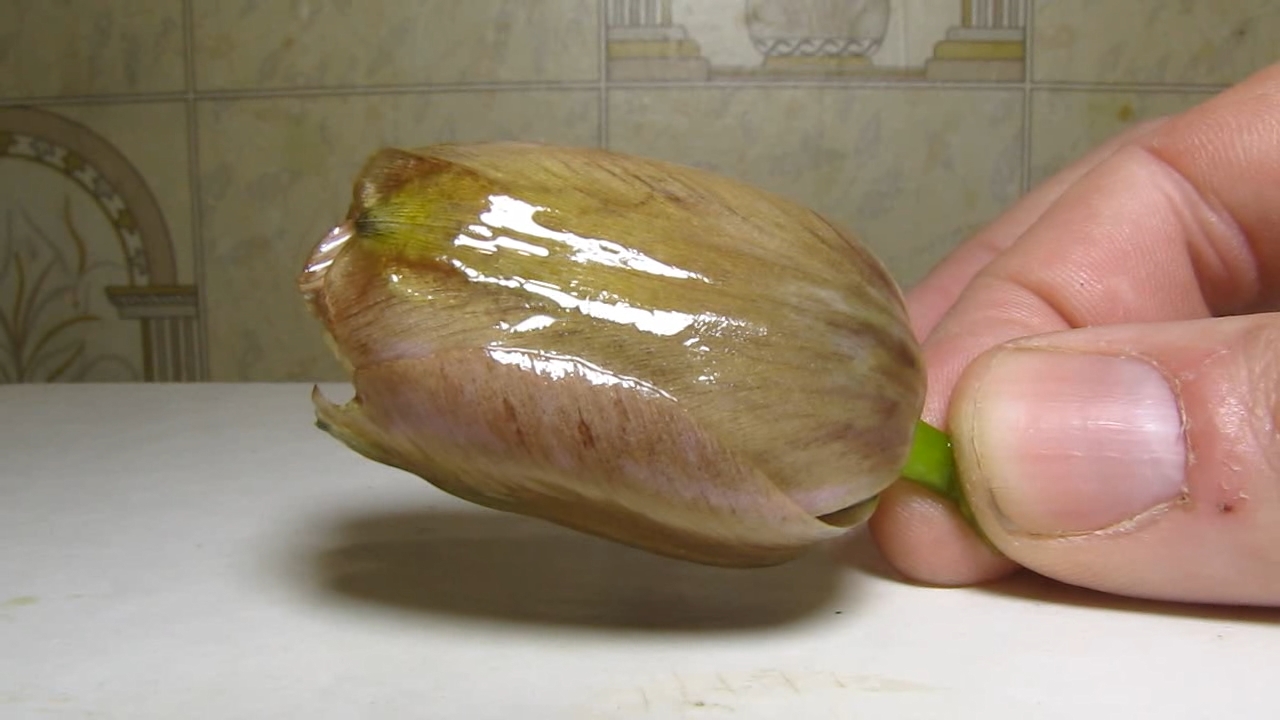
|

|

|
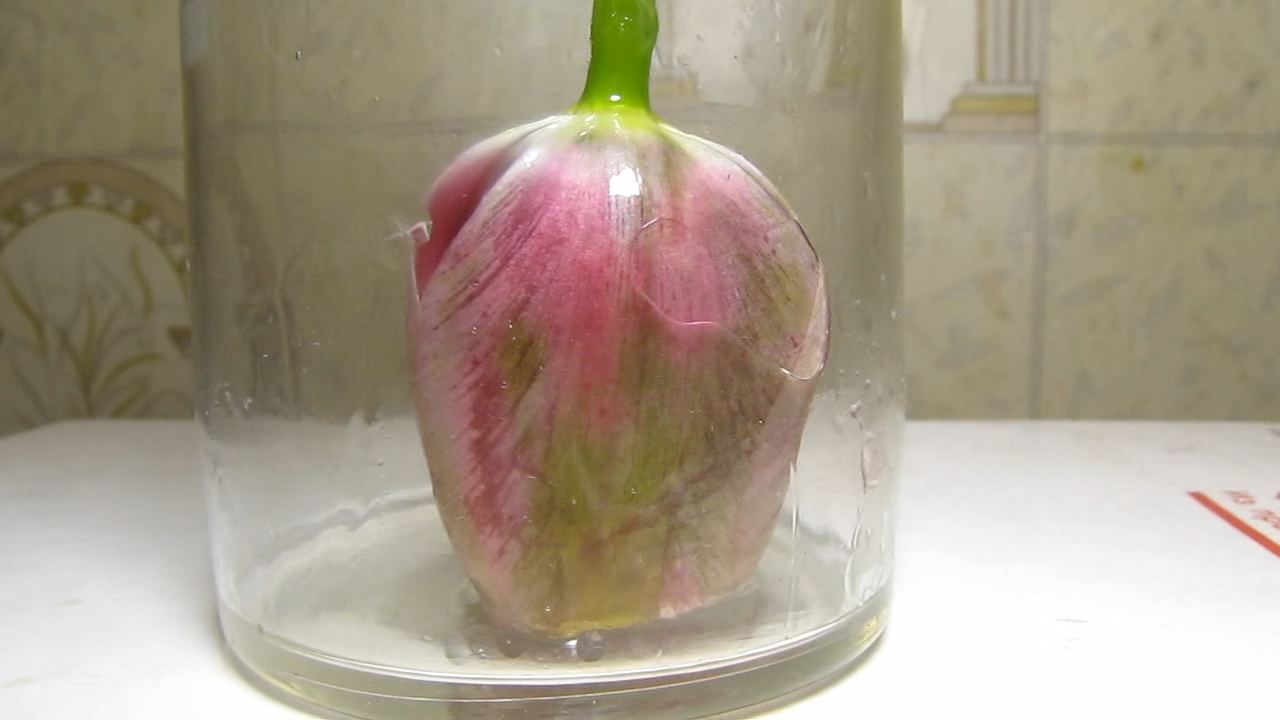
|
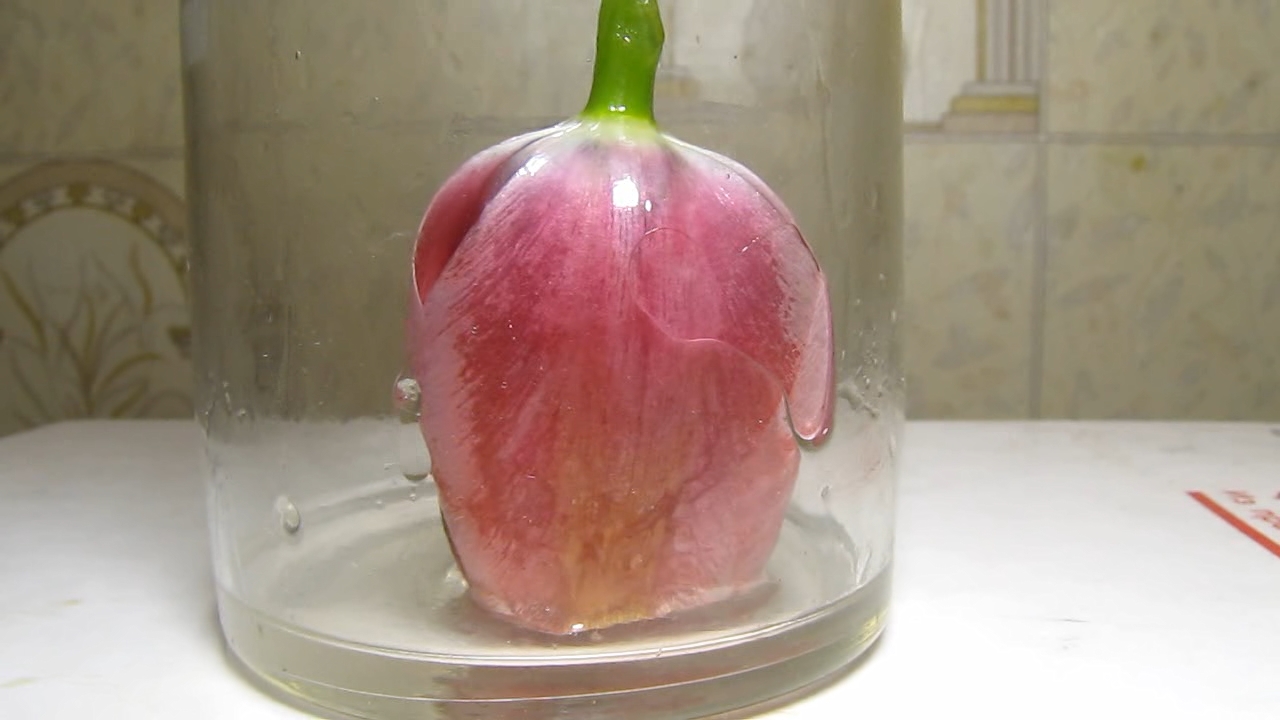
|
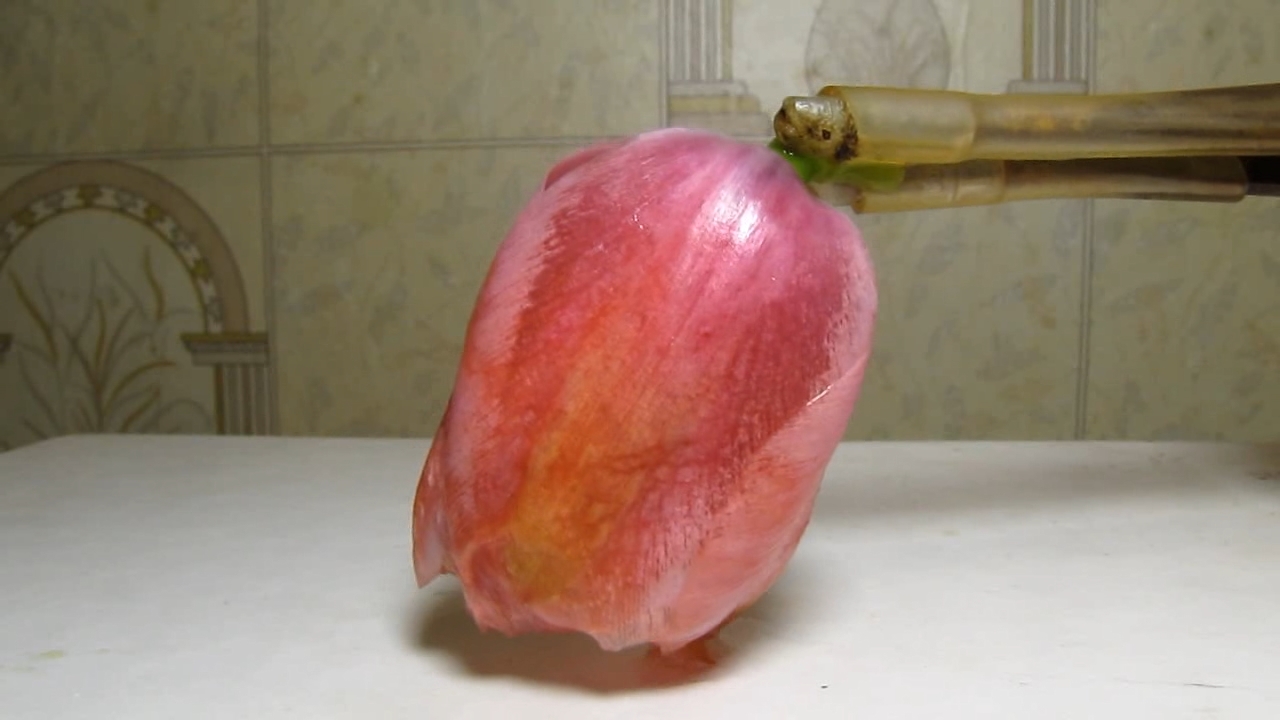
|
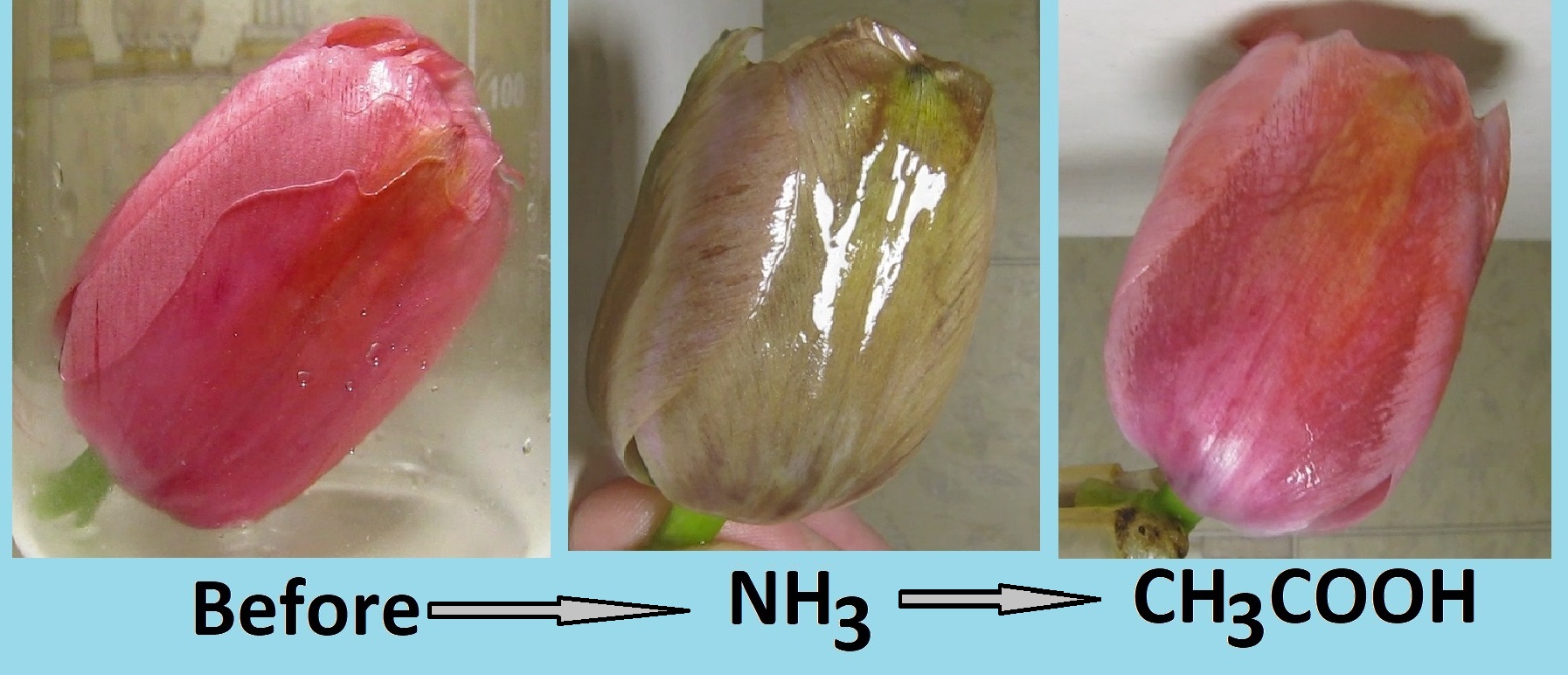
|

Red tulip, ammonia and acetic acid |
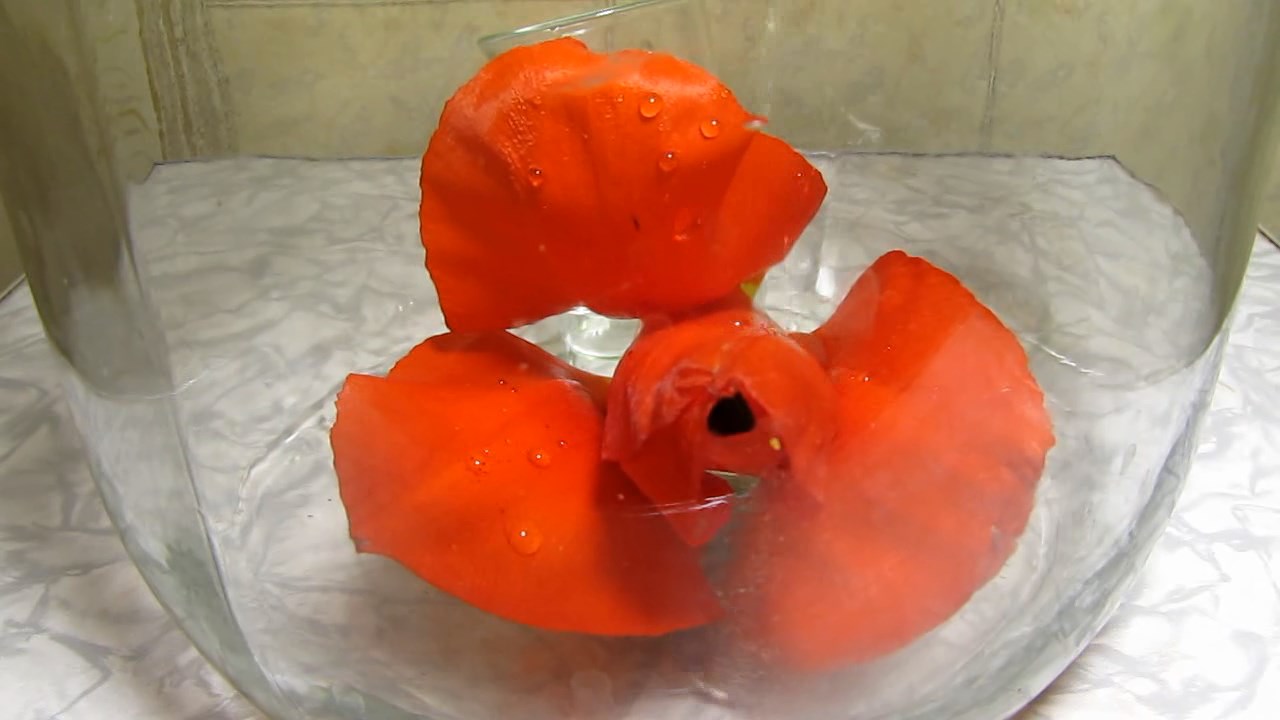
|
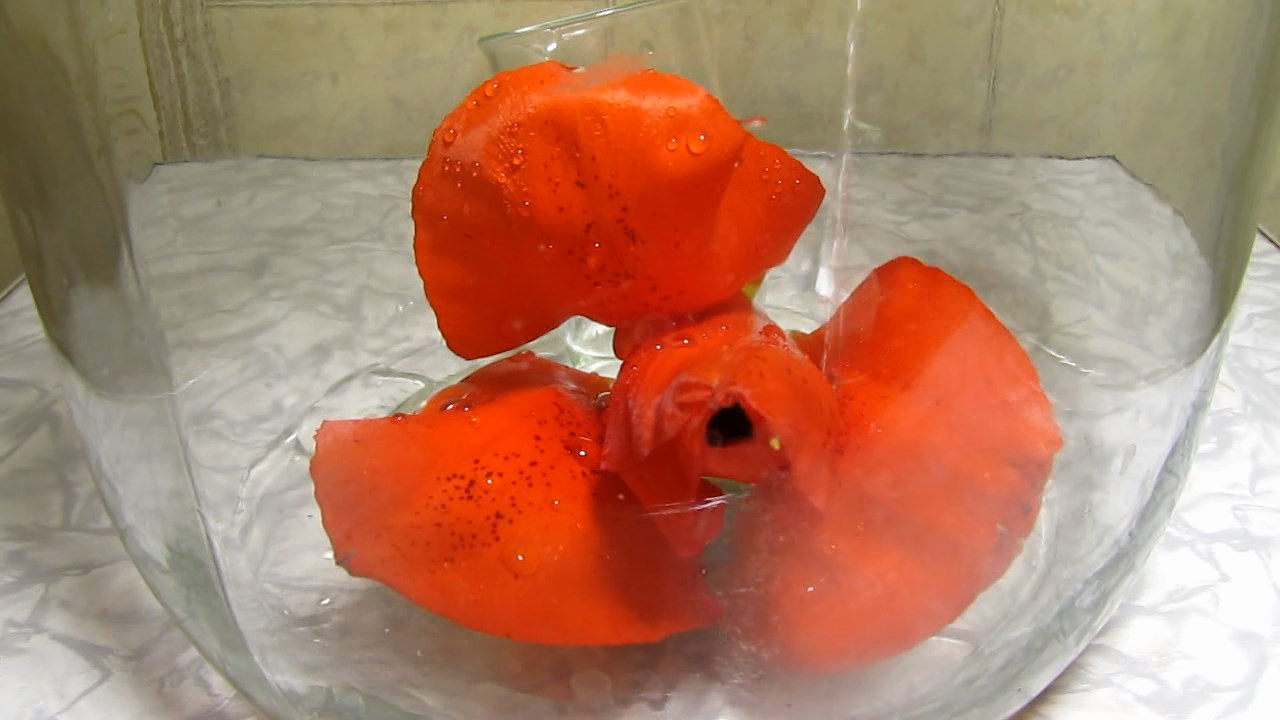
|

|
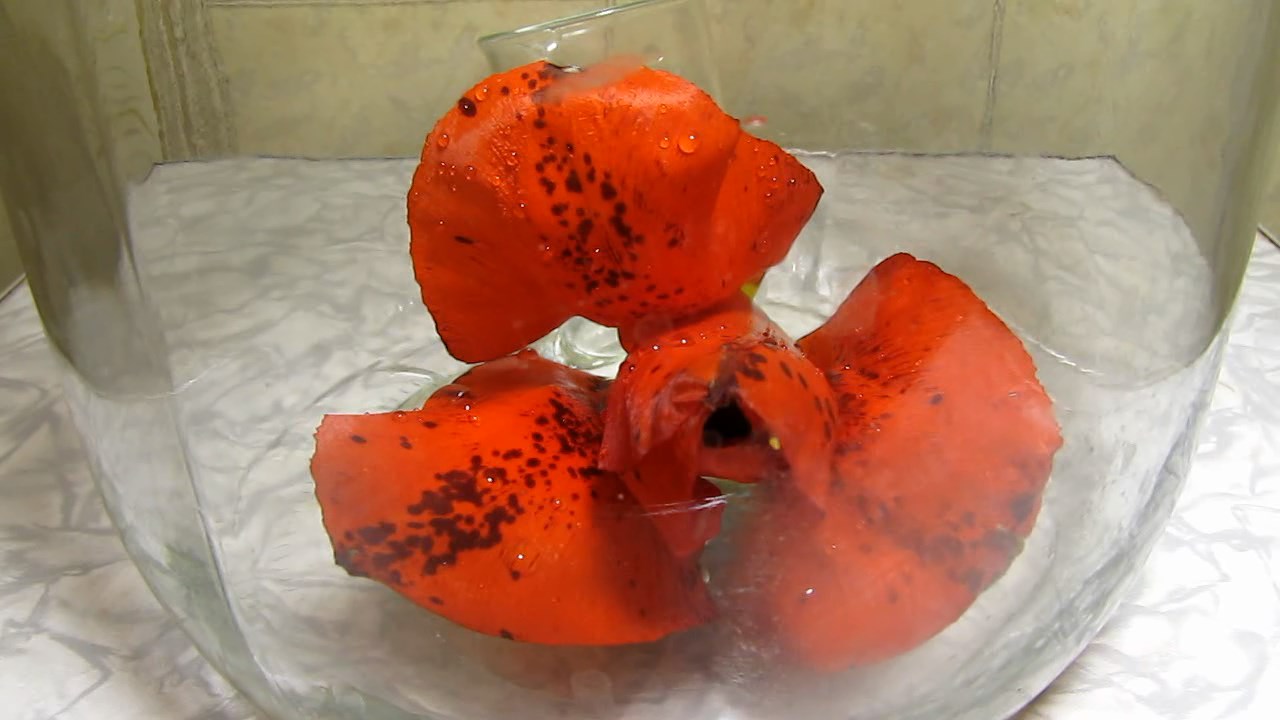
|
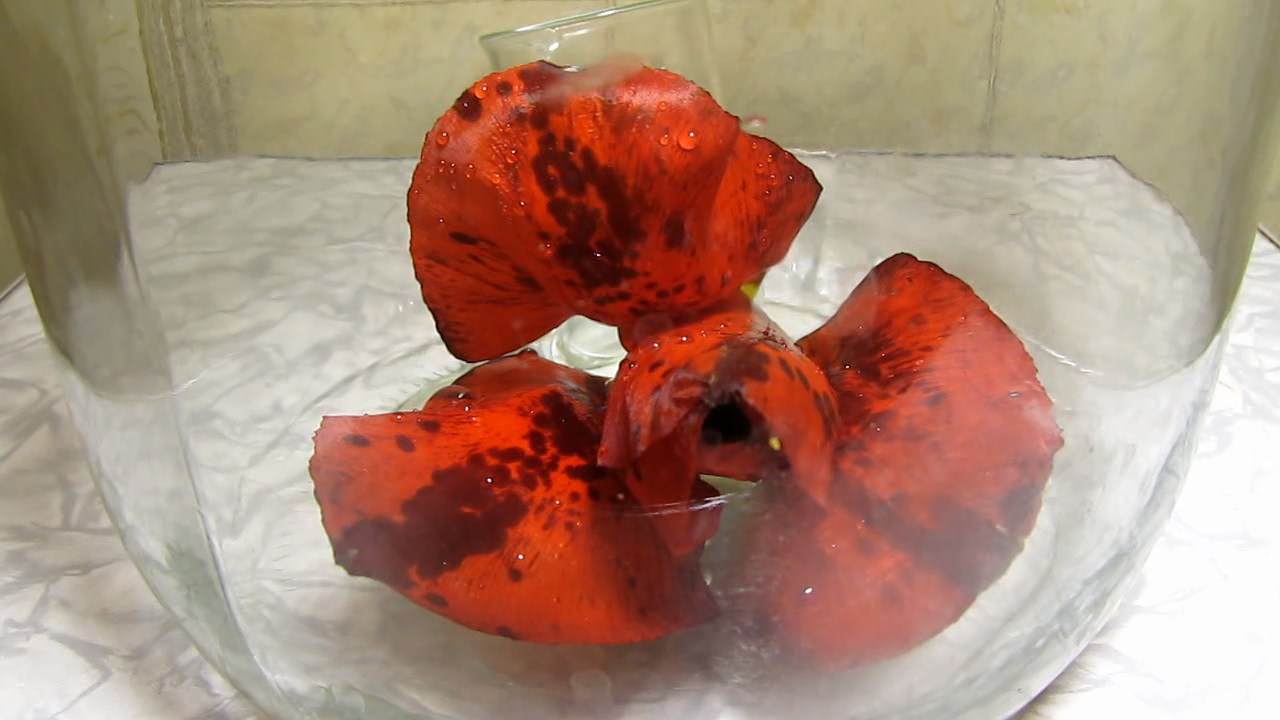
|

|
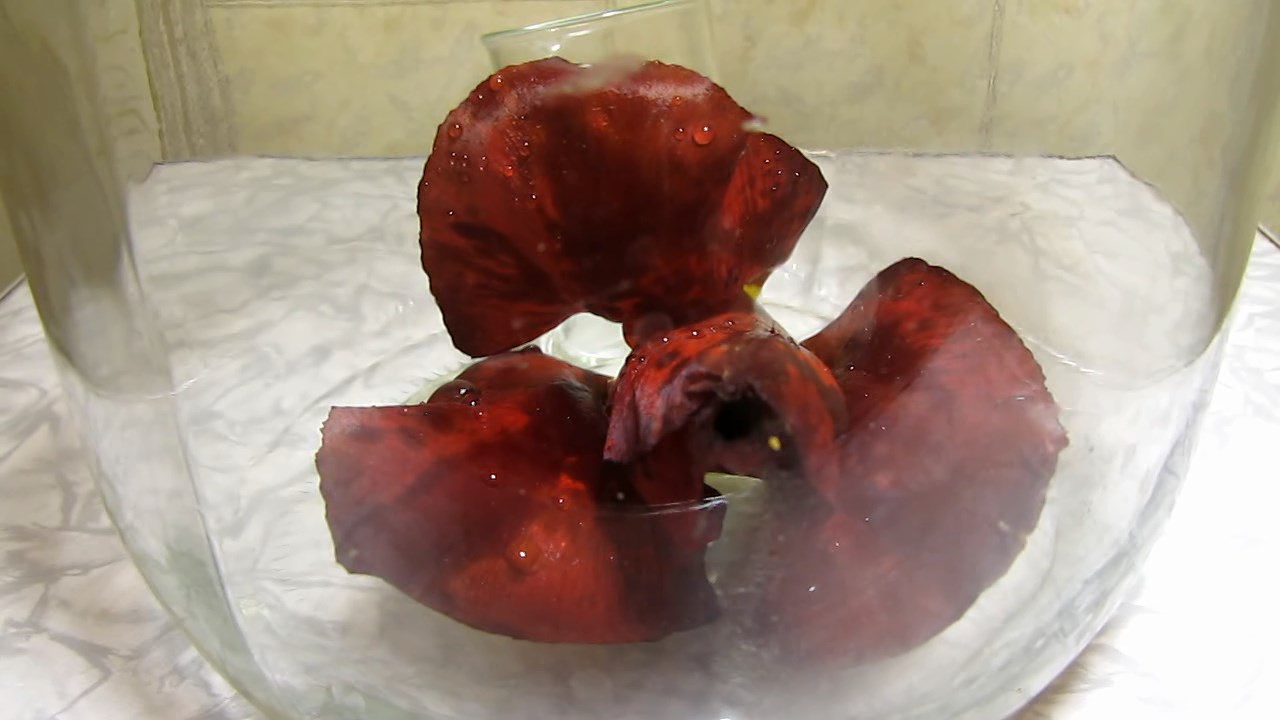
|
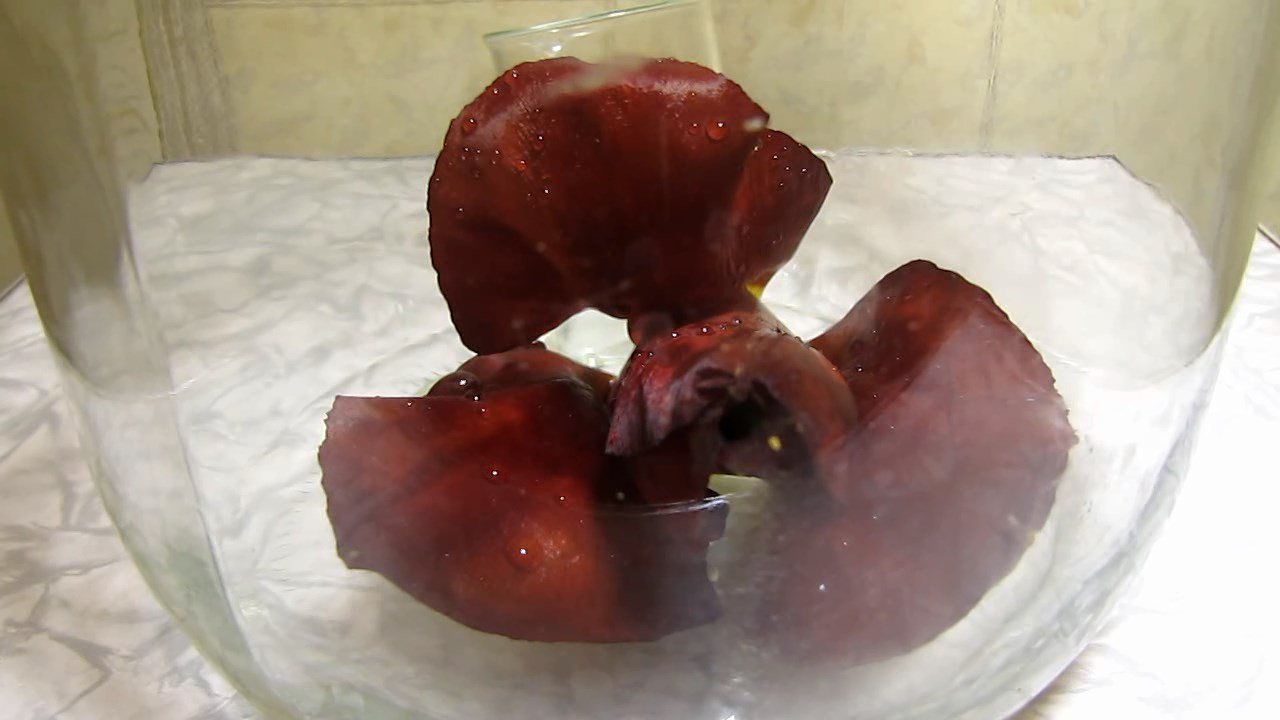
|

|

|
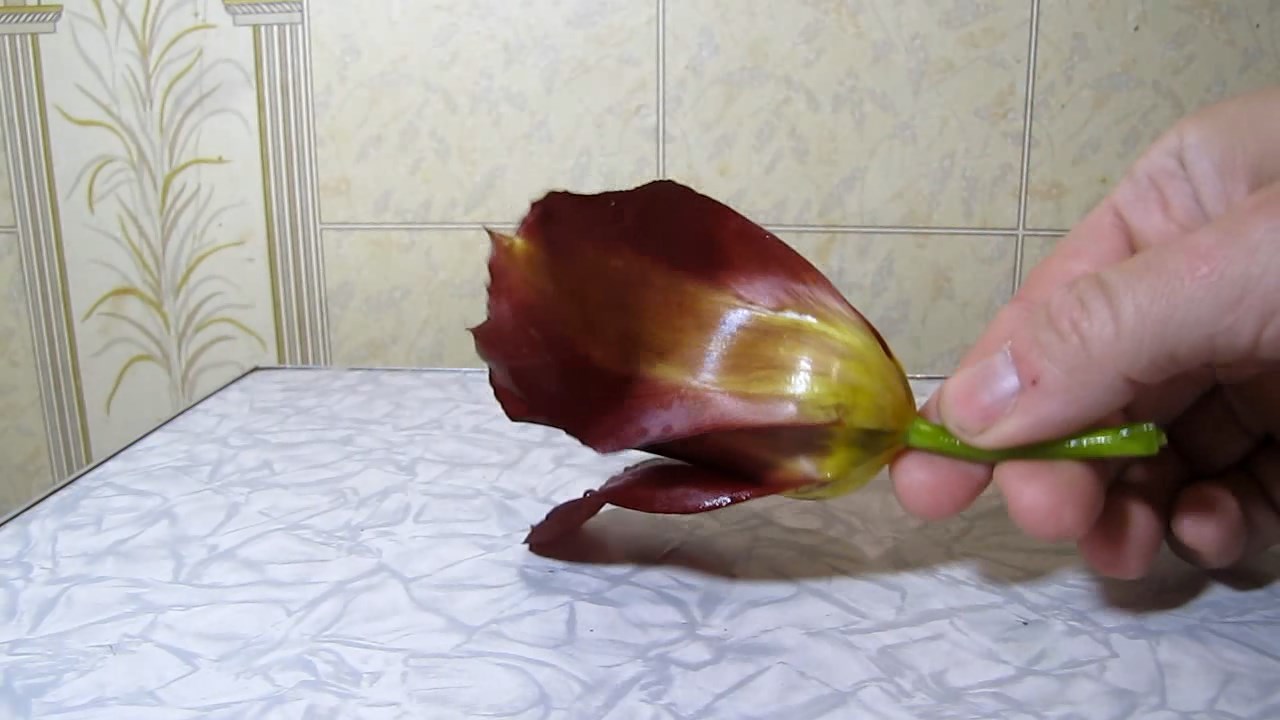
|

|
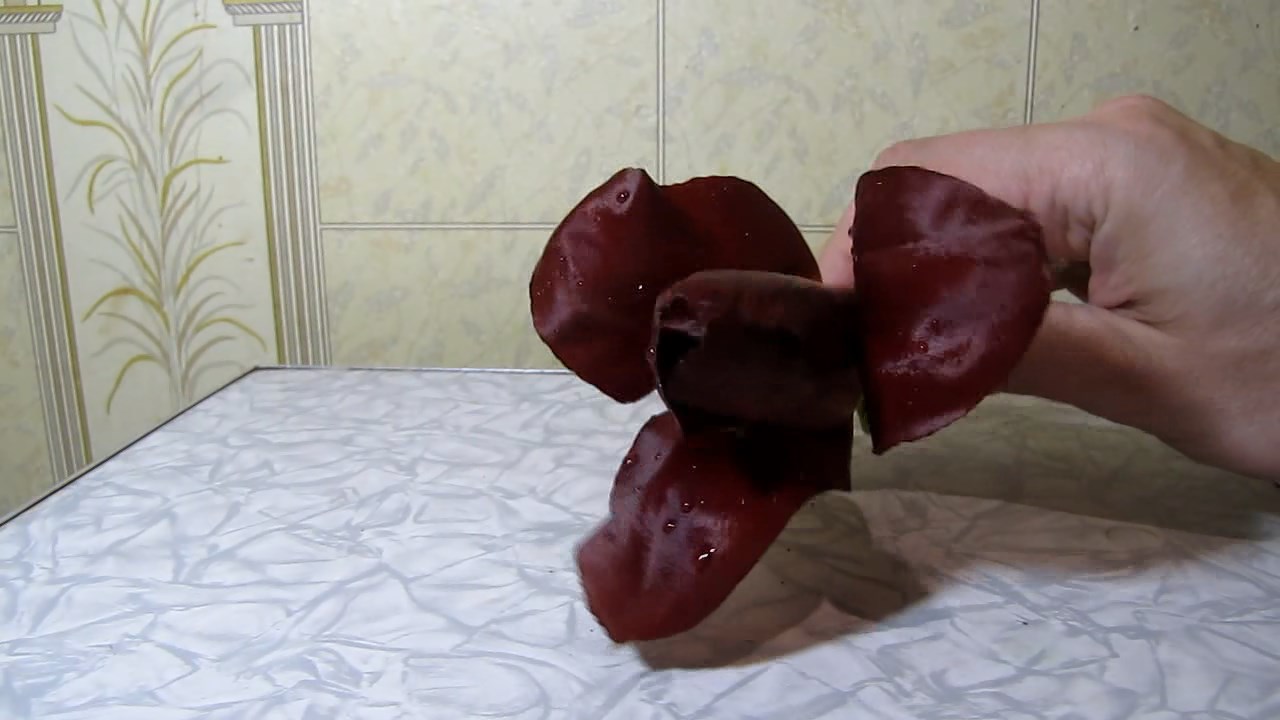
|
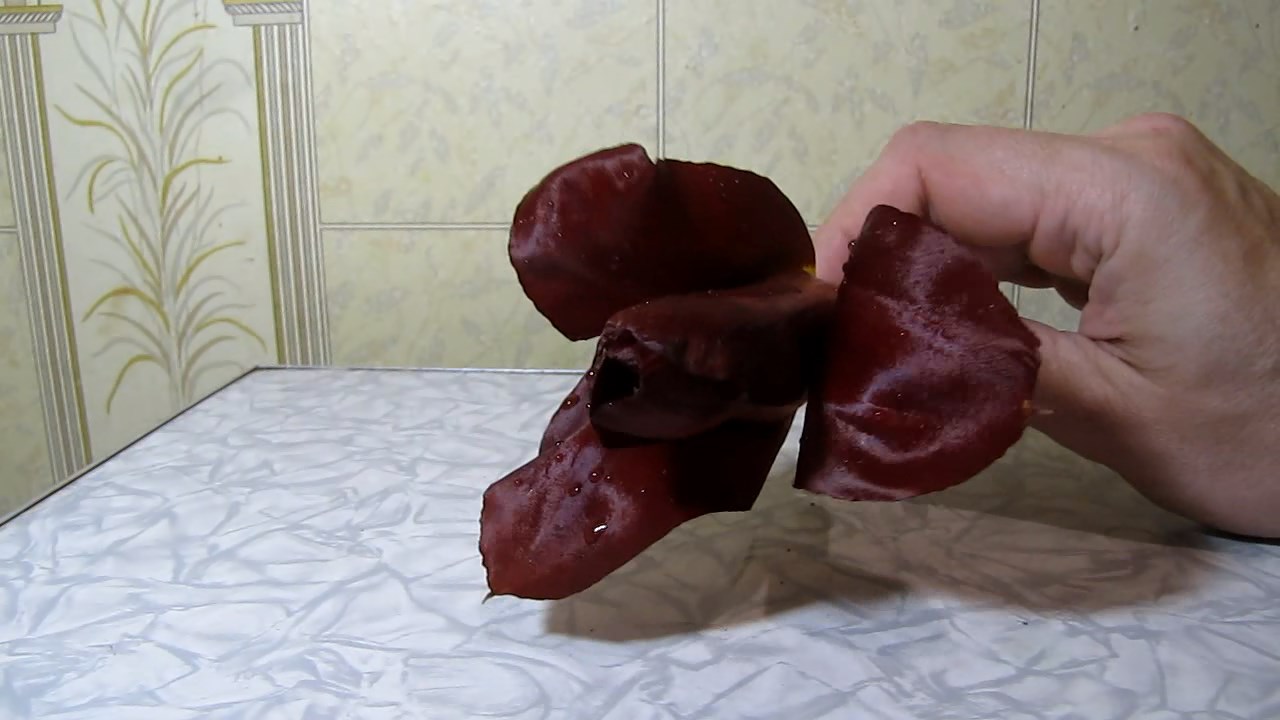
|
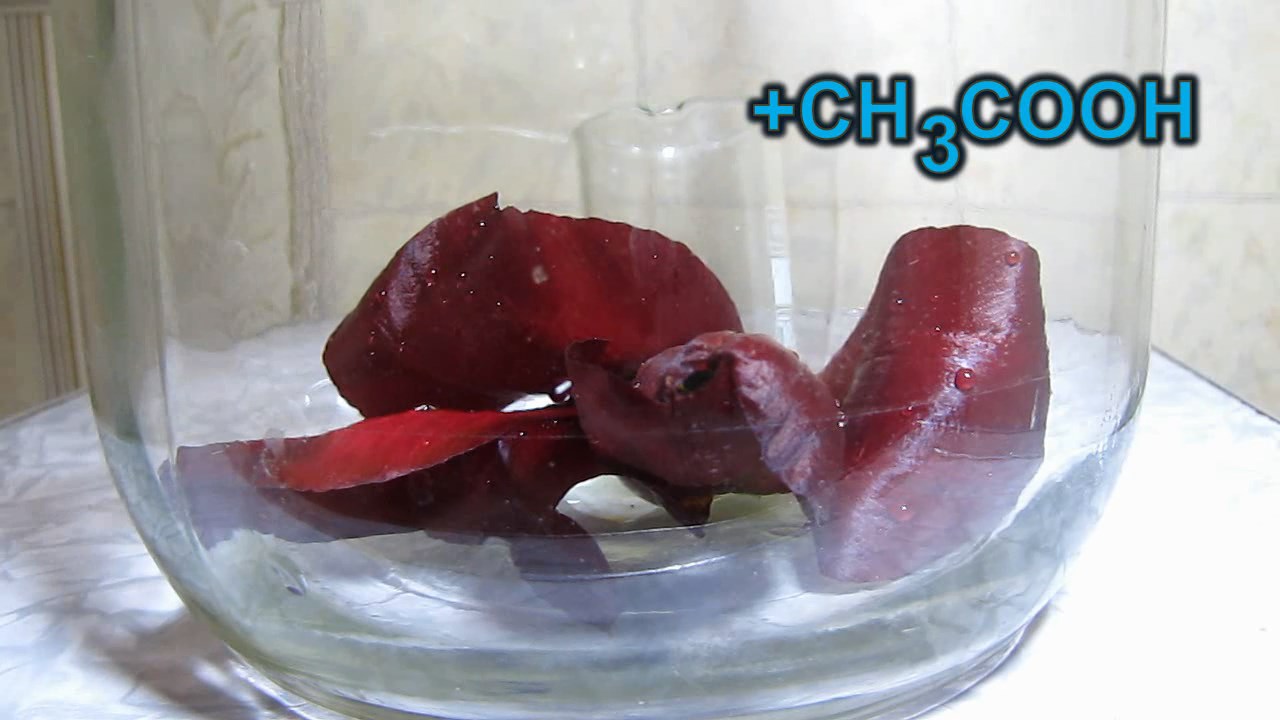
|
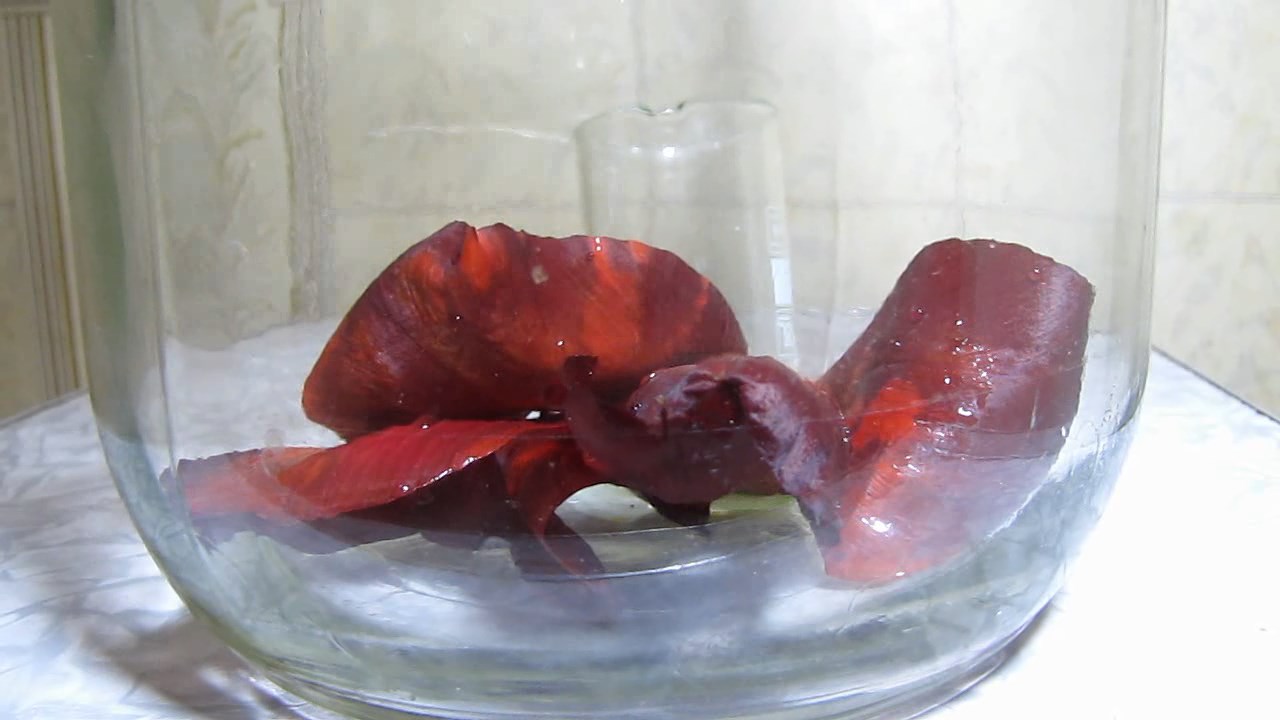
|
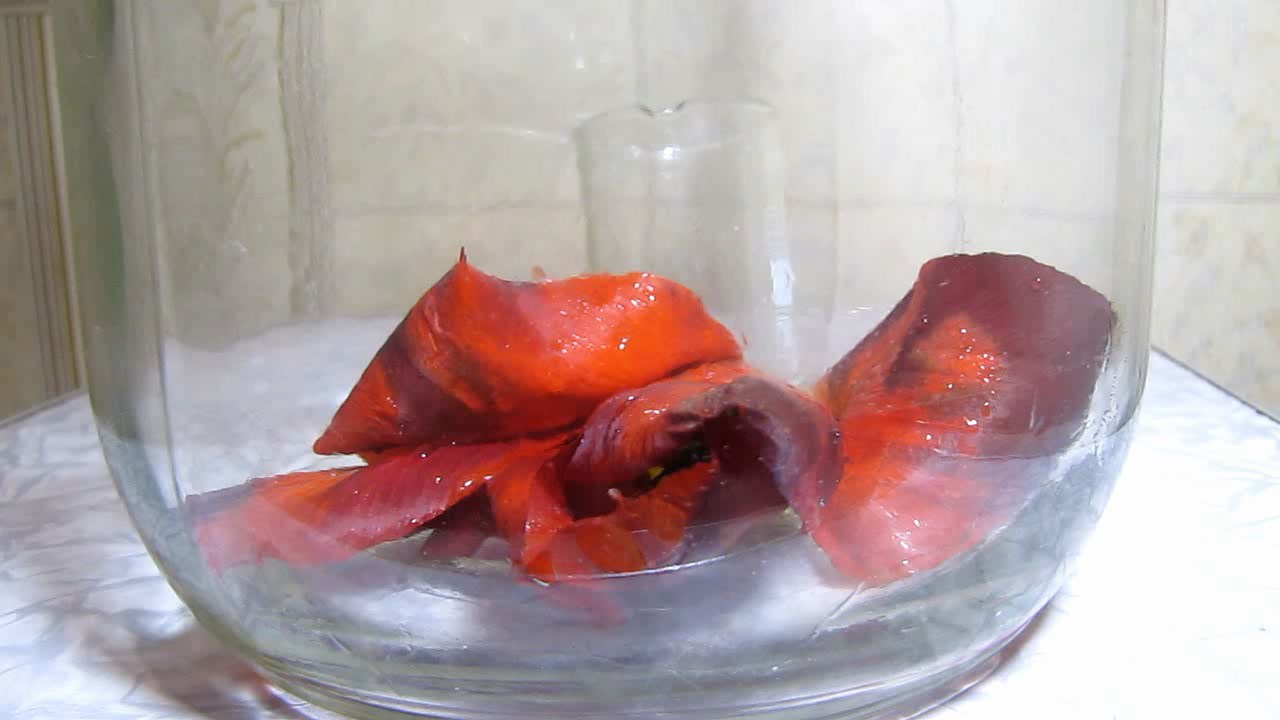
|
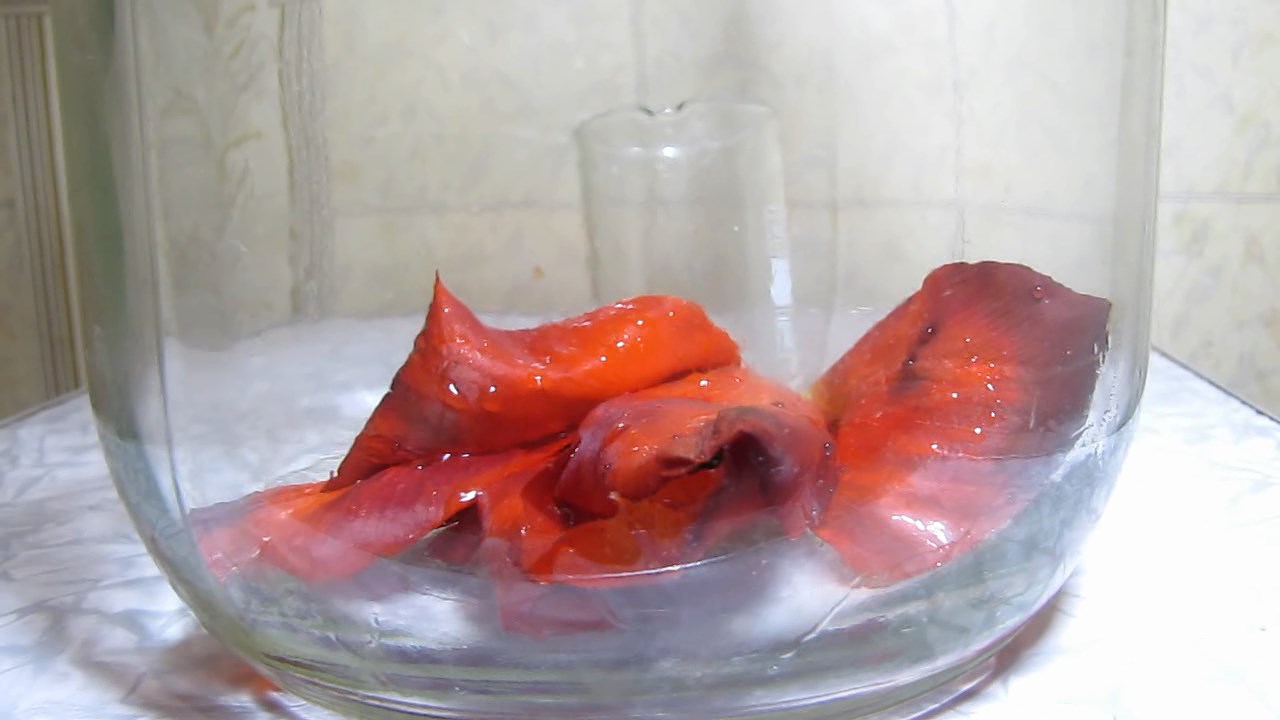
|

|
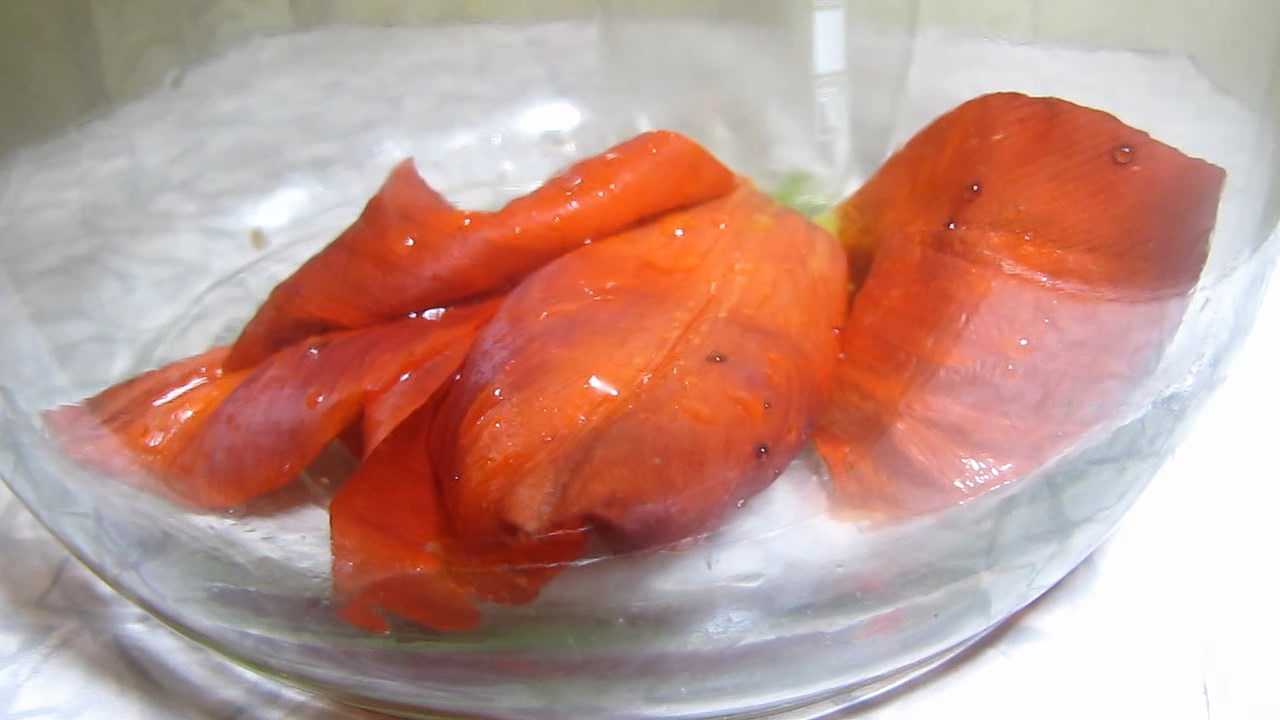
|
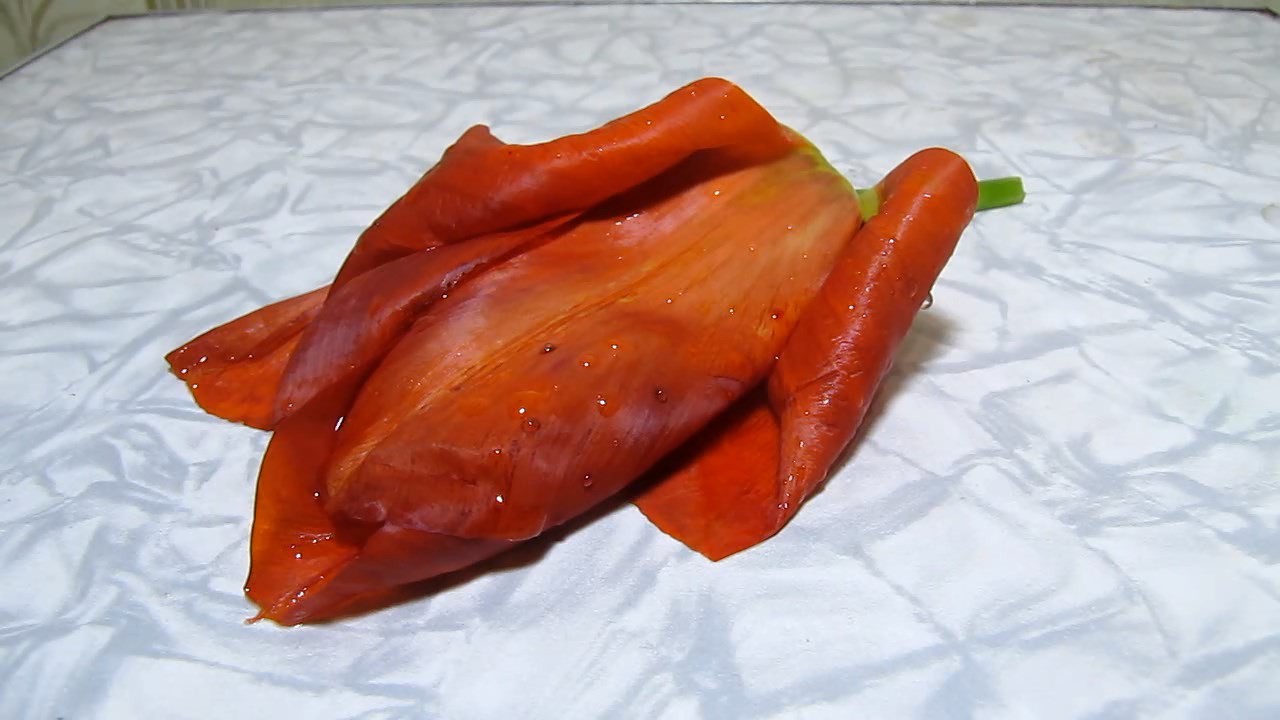
|
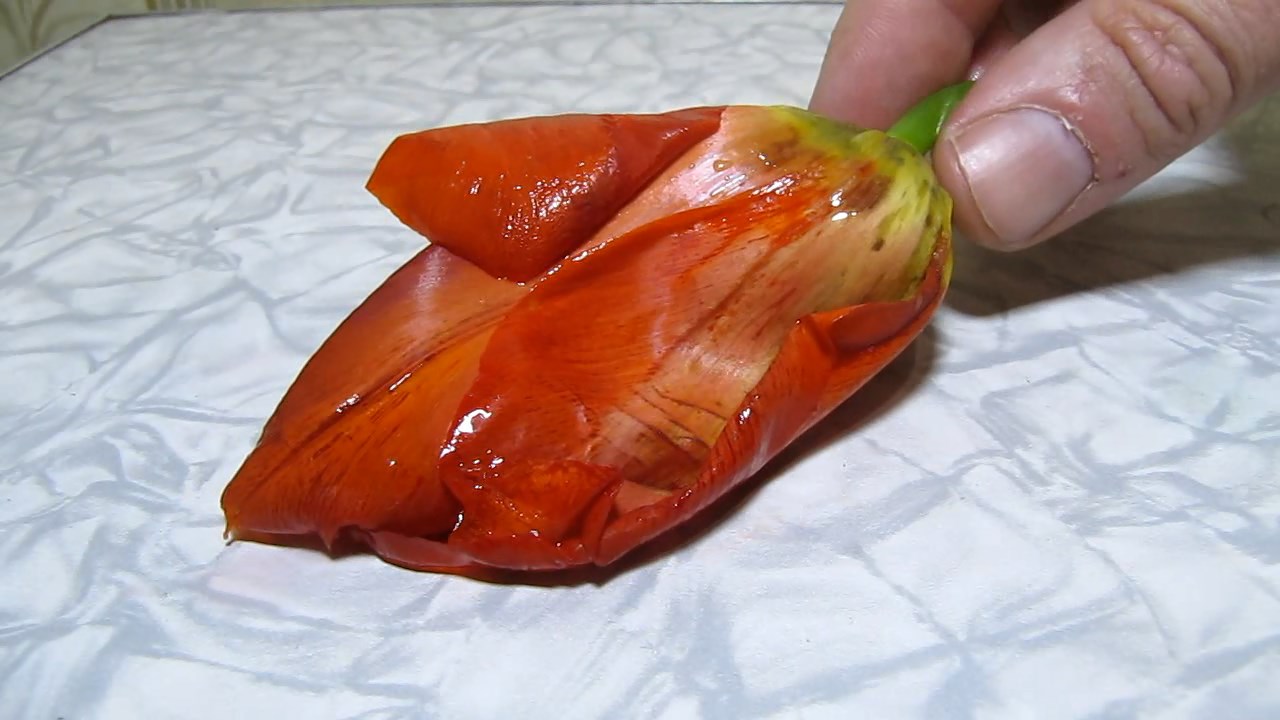
|